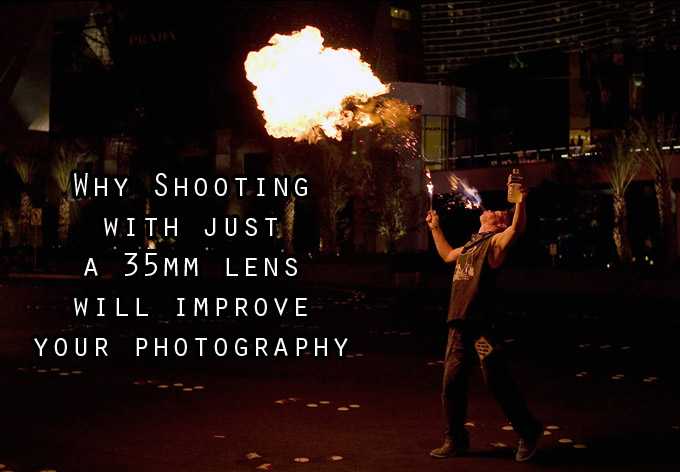
Why shooting with just a 35mm lens WILL improve your photography.
By Steve Huff
I originally wrote this article to end my Fuji X100 camera review but decided to expand on it and publish it on its own. When the X100 and even the Leica X1 were announced and released, many people were complaining that it did not have a Zoom lens, or have the capability of adding another lens. I heard things like “Who wants a fixed 35mm lens” and “These cameras are useless with just a 35”.
To me, this kind of thinking is borderline nonsense as the 35mm focal length is one of the most useful, if not THE most useful focal lengths you can use! I truly believe that if you shoot with just a 35mm focal length for at least 6 months your photography will improve and so will your knowledge of composition, reading light, and even your “vision” will improve. By that I mean, the way you see things in relation to photography.
Yes, It’s true. You can not add a zoom lens to cameras like the X100 or Leica X1 nor do they have a built in zoom lens. When you invest in these types of cameras, you are investing in a 35mm camera. Just like the old days with the classic fixed lens film cameras. But I see this as a good thing and is why I also adore the Leica X1 and X100 and even a Leica M9 with a simple 35mm lens attached.
For me, it’s all about simplicity and knowing what to expect from the camera. After a couple of weeks shooting with just your camera and one 35mm lens you will start to be able to visualize in your head what your image will look like, way before you even shoot it. When I go out and spot a scene I want to photograph, I instantly envision in my head what the image will look like. I can visualize what it would look like at f/2 or f/8, I can see how I want it framed and what my final image will look like, even with processing! I see all of this before I take the shot. I can do this because I have been shooting with prime lenses only for so many years, and the 35 has been one of the main focal lengths I use along with my 50mm.
Some Images using only the 35mm focal length.
The house below was shot with a Leica M9 and 35 Summarit, which is a GREAT lens for this type of photo. It’s funny because the Summarit has better Bokeh than the 35 Summicron ASPH, and is about half the price and a smaller lens! True!
If you click on the house image below, you can see the quality of the lens better as the detail is also there.
The image below of the old (and what I thought was an abandoned) motorhome is one of my favorites of recent times. I remember driving down a rural road and I spotted this “scene” from the corner of my eye. I immediately turned around and pulled up to this dirty, worn down, flat tired motor home. Right when I stepped out of my car I knew exactly what angle I wanted because of the tarp that was flowing towards my lens. I knew this would look amazing in black and white and when I processed the image, it was exactly what I had hoped for.
It was shot with the Leica M9 and 35 Summicron ASPH lens.
For at least a year I traveled around with my M9 and 35mm taking photos of old buildings and abandoned places. It was almost an obsession of mine, finding these long forgotten houses, shops, cars..and even gas stations. For this project, the 35mm focal length was my most valued and used lens. A 28 was always a bit too wide, and the 50 was a bit too long.
This old service station was captured deep in the mountains of Kentucky, once again with the Leica 35 Summarit. For full detail and color, click on the image.
So OK, so far all I have shown you is old buildings and a motorhome, which are all perfect subjects for a 35. What about people? Sometimes with a 35mm, if you get too close to someone they can appear distorted, but not always. I find the 35mm focal length great for portraits IF you want to include the surroundings as well, and IMO, this makes for a much nicer “portrait”. A few years ago I started finding the typical 85mm portrait “heads” somewhat boring. I like to see more of what is going on in the surroundings…the persons “environment”, which is why you have probably heard the term “Environmental Portrait” before.
In my opinion, the 35mm focal length can produce more interesting portraits than a 50, 75 or 90 IMO. Why? Because you see the environment along with the person. You see what is going on in the scene which I find much more interesting than just a plain head shot most of the time.
Below is a fire breather who was walking the streets of Vegas and anytime someone gave him a dollar or two he would breath fire on the street, stopping traffic an all. With the M9 and 35 Summilux ASPH II, this shot was easy, and i love it!
–
The next shot of my son Brandon was taken over a year ago with the M9 and 35 Summarit. We were sitting down to eat and I wanted to get a picture of him browsing the menu but instead he looked up at me with the “are you taking a picture AGAIN!” look. Added a Sepia tone in Color Efex which looks better when you click on the image. This shot, when viewed at the larger size, reminds me of how great this little Summarit is. A little bit classic, a little bit modern, and the lowest price Leica 35.
–
Even the little Olympus E-PL1 with the 17mm pancake attached is just about equal to a 35mm foal length (34) and here is another portrait I shot with that exact combo! I really like this one as you see the environment in which the Auctioneer works. This was at an auction on a hot sweaty summer day and he was standing in the back of his truck from where he auctioned off a house and belongings. It was in Illinois and probably close to 100 degrees on that day. IT WAS HOT and HUMID.
–
When I shot the last Seal tour I also experimented with the 35 and really loved what I managed to capture with it. Shooting concerts with a 35mm lens sounds odd doesn’t it? Seems like it would be much too short, but with a performer such as Seal, using a 35mm is ESSENTIAL as there is so much audience participation going on. Once again, getting the subject and his surroundings is key to a really great photo. This one is with the M9 and 35 Summicron ASPH.
–
Using the Leica X1 which has just about a 35mm equivalent lens…
Here is one more “Environmental Portrait” I shot a year ago with the M9 and 35 Summilux ASPH II. You can see that this guy is a street performer. It tells more of a story than just a headshot would.
So as you can see, the 35mm focal length is very useful and versatile. In fact, after always going back and forth over which focal length I prefer between a 35 and 50, I always go back to the 35. It just seems natural.
After shooting a camera and one lens like a 35mm for at least 6 months you will know what angle to get, where to stand and you will get out of the “Zoom Lens” mindset, which IMO, makes you lazy. There, I said it and I mean it! Zoom lenses make you lazy. Sure it is nice to have that huge and pricey 70-200 because when you are roaming around the Zoo that is what everyone else has with them, and I used to be guilty of the same thing many years ago. Once I started shooting with a 35 and 50 my whole outlook changed and I realized that 95% of my shots taken with a zoom lens…sucked!
These days when I look back at my “zoom” shots they look flat and lifeless and it LOOKS like I zoomed in on my subject. But sometimes there will be a subject that is farther away and without a Zoom you can’t get close. Maybe you can not walk up to your subject to get closer. When this happens, I change my whole approach to the shot. Instead of worrying about the subject I look around and see what I can capture within the shot WITH the subject, and this usually makes it much more interesting.
Now of course, sports shooters and wildlife guys need powerful zooms (or primes) but for most of us, including the hobbyists, it could be a great experience to just shoot with one lens and one lens only for a while, and believe me, it will improve your photography.
I could get by day to day with either a 35 or a 50. My favorite lens in the world is actually a 50, but not for its focal length. The Leica Noctilux for its gorgeous rendering. Right behind that the new 35 Summilux ASPH. I have shot with a 35 for months on end, and did the same with a 50. Did my photography suffer because of it? NO, in fact, it had the opposite effect. It IMPROVED it.
My wrap up…
Shooting ONLY a 35mm lens for say, 3-6 months, will open up your mind to other possibilities. You will not just aim, zoom and shoot but you will look around, think and ask yourself how you can get the best shot with what you have. Shooting at 35mm seems natural. You can get great environmental portraits and even normal portraits if you step back a bit. 35mm is great for landscape and urban shots. It kind of sucks you in to the image at times and is not too wide like a 24 or 28 might be, nor is it too constricted like a 50 can be in some situations.
In many ways, in my opinion, the 35mm focal length is the perfect focal length for shooting life as it happens. The things around you, the people around you, and the daily grind in general. If you have the chance, put a 35mm (equivalent) on whatever camera you own and shoot it for a few weeks. ONLY using that lens. My guess is that by the end of the few weeks you will have some amazing keepers, and you will also have learned a bit more about composition. You will also have a liberated feeling as the stress of “what lens should I use” will be gone. Just you and your 35…pretty cool.
[ad#Adsense Blog Sq Embed Image]
HELP ME TO KEEP THIS SITE GOING AND GROWING!! IT”S EASY TO HELP OUT!
Remember, anytime you follow my links here and buy from B&H or AMAZON, this helps to keep my site going. If it was not for these links, there would be no way to fund this site, so I thank you in advance if you visit these links. I thank you more if you make a purchase! I have nifty search bars at the upper right of each page so you easily search for something at either store! I currently spend 10-14 hours a day working on this site and the only way that I can pay for it is with your help, so thank you! Currently my traffic has been increasing but my funds to pay for the site has been decreasing, so any help would be GREATLY appreciated!
Even if you buy baby food, napkins or toothpicks at amazon it helps this site, and you do not pay anything extra by using the links here. Again, you pay nothing extra by using my links, it is just a way to help support this site, so again, I thank you in advance ![]()
If you enjoyed this article/review, feel free to leave a comment at the bottom of this page and also be sure to join me on twitter or my new facebook fan page!
Also, you can subscribe to my feed at my subscribe page HERE and read these posts in your browser or news reader! Be sure and visit the all new forums on the site HERE! THANK YOU ALL!

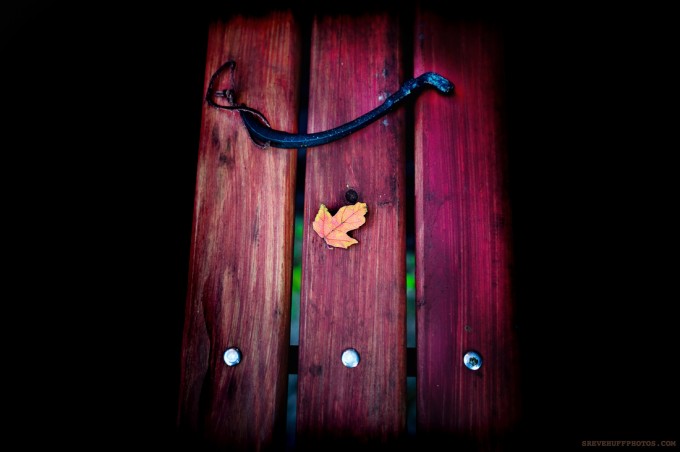
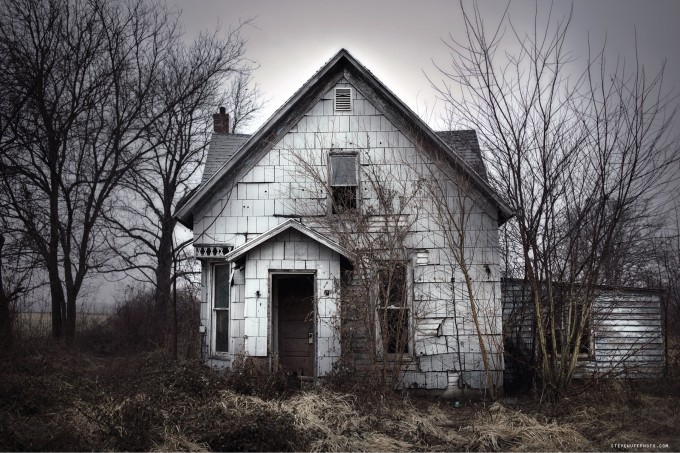
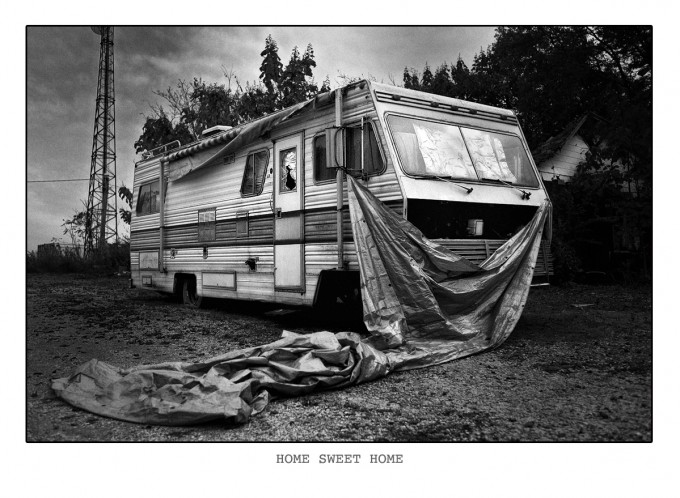
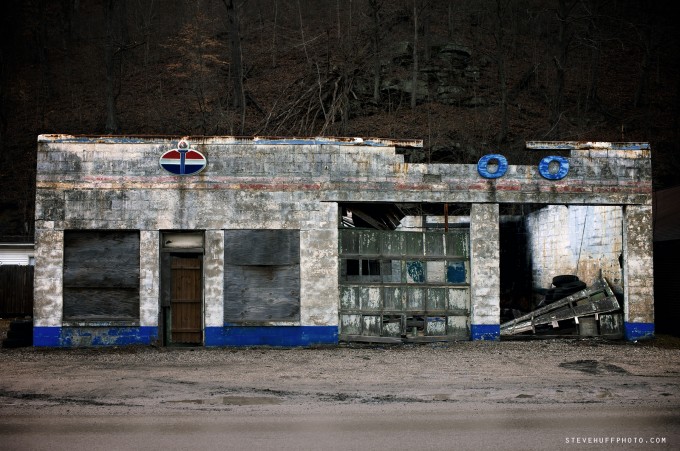
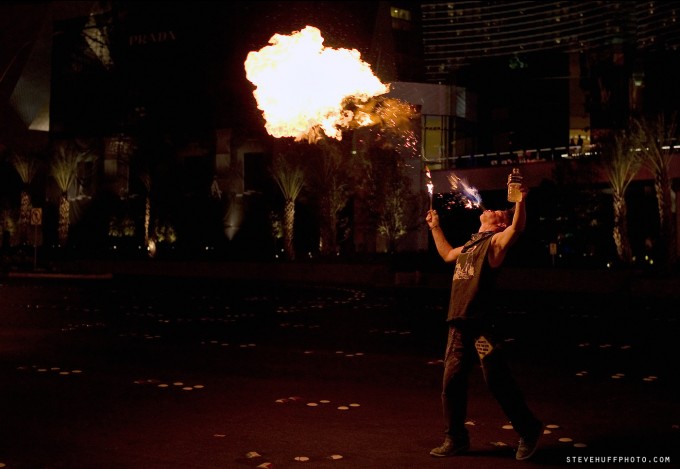
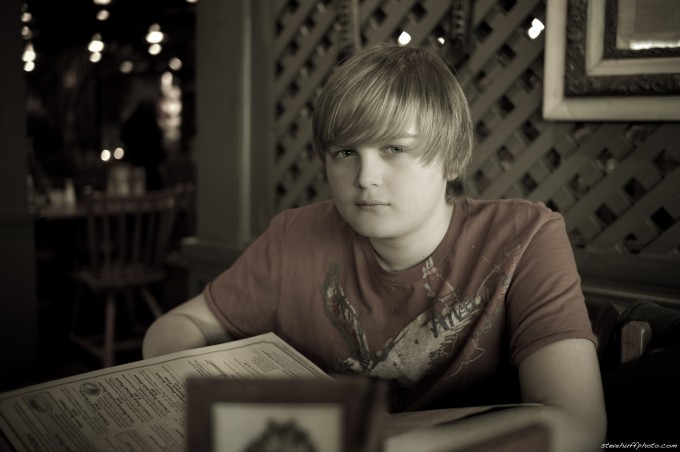
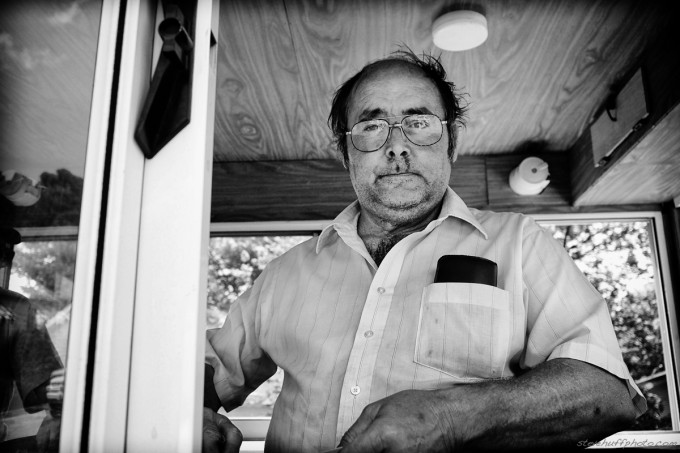
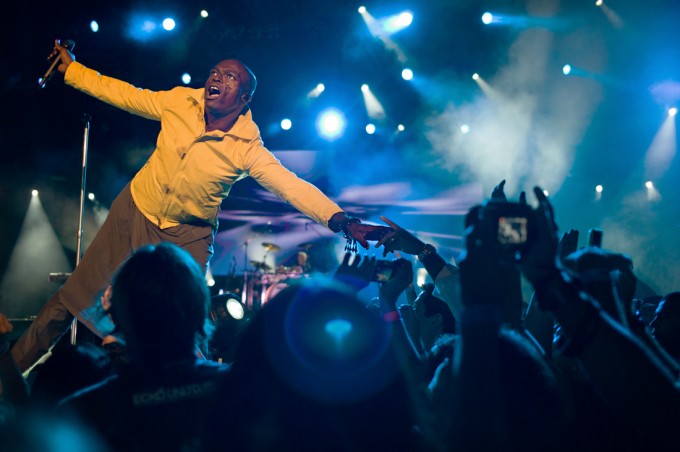
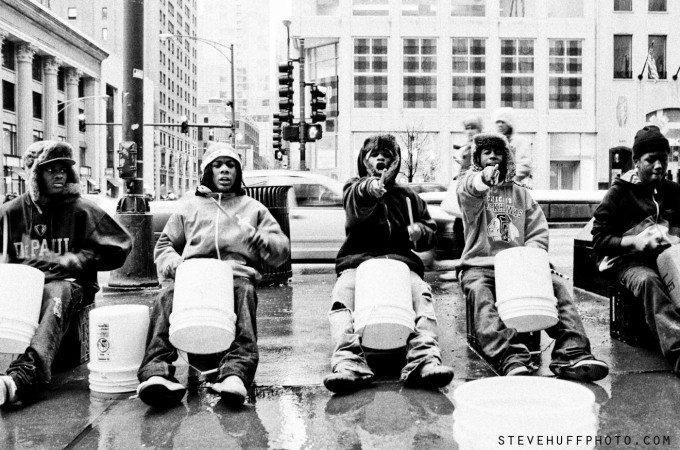
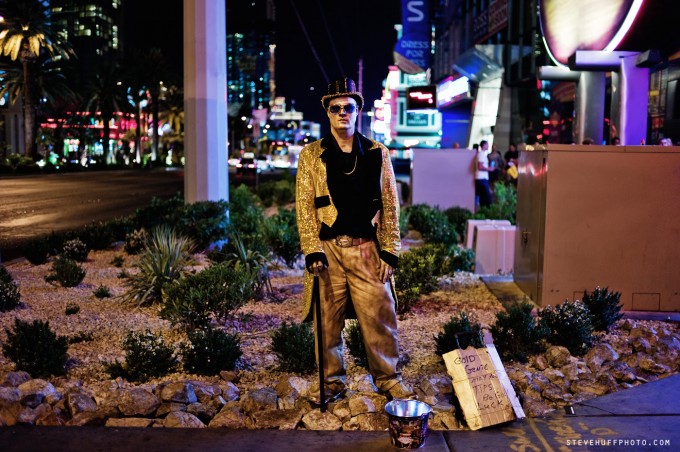
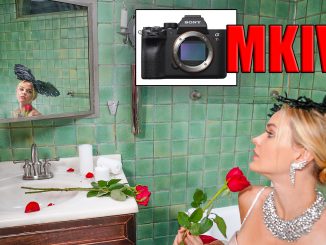
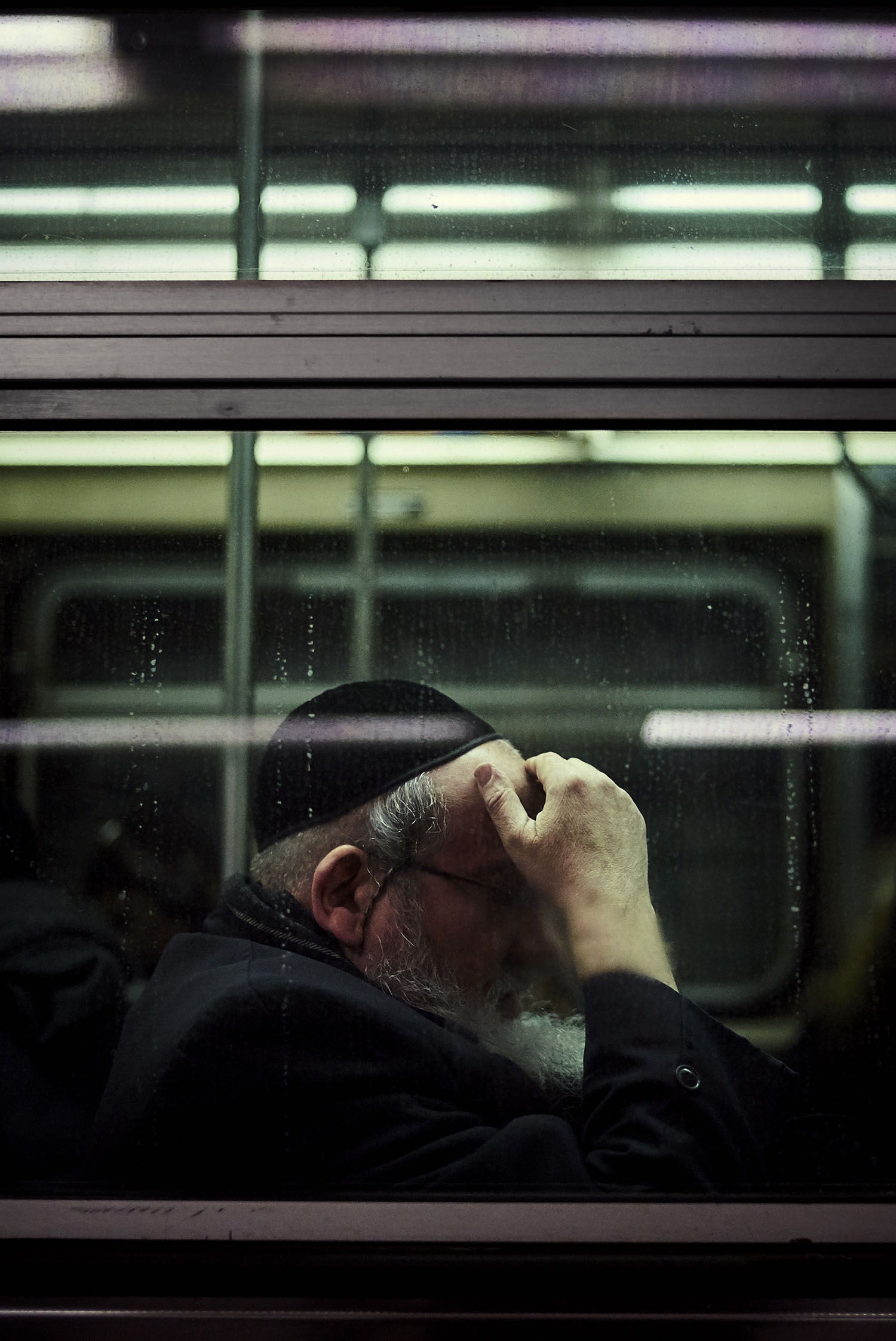
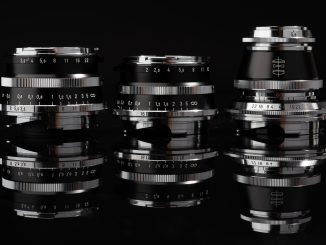
A great article, confirmed a few things I was suspecting and thinking about the 35!
Assuming that you didn’t have a Damascus Road style conversion to prime lenses, what led you to first start using them, in preference to zoom lenses?
I have heard other people say that you develop an ability to visualise the end result, before you even put your eye up to the viewfinder.
If the CSR2 value is lower and it’s reported as a CSR value, the
perceived value of your farm could also be impacted though the
soils are the identical.
whoah this blog is fantastic i really like studying your articles.
Keep up the great work! You already know,
a lot of persons are looking around for this information, you can help them greatly.
This is just what I was looking for! I’m thinking about getting a 35mm for my new camera. So I’m assuming this would be a good lens to take at home pictures of family? Especially my kids?
You’ve made some really good points there. I looked onn the
net for additional information about the issue and found
most individuals will go along with your vuews oon this website.
I’d like to thank you for the efforts you’ve put in penning this site.
I’m hoping to see the same high-grade content from you later on as well.
In truth, your creative writing abilities has encouraged me to get
my own, personal blog now 😉
The article makes a very strong case for just using one focal length for 6 months. I just wonder how many people find owning both a 50mm and a 35mm useful. I read everywhere that it’s not really worth owning both on the basis that the field of view is very similar from 35 and 50mm lenses but would like to know if this is true and whether it’s best to choose one or the other.
Lots of people have both, but I’ve observed that many people have a strong preference for one or the other. One will simply suit them more.
Perhaps because these focal lengths roughly match those of our eyes we develop intimate relationships with these lenses? The “seeing” in 35mm or 50mm that the author mentions.
Myself, I have a strong preference for 35mm, even if 50mm is at times more convenient. 35mm just seems right.
Great article Steve. I’m right there with you on the lens except I chose to make my everyday lens a Voigt 40mm/F2 Aspherical pancake lens. Pretty close to the 35mm lens. I’m always amazed what you can put on film with the 35-40mm lens range. The Voigt has that Leica look to it in the images. I would never sell the 40mm. If I need a bit more range I’ll go to the Nikkor 85mm/F1.8D lens. These two lenses are a perfect combination for me. Just my two cents…
Great web site you’ve got here.. It’s difficult to find high-quality writing like yours nowadays.
I honestly appreciate people like you! Take care!!
I have a Canon 6D with 24-105 f4 and 70-200 f4. I sold my 70-200 f4 today and order x100t just to experience the real charm of photography than just taking some close portraits with 70-200 f4. And also believing it will allow me to travel everywhere with the camera and make me shoot more.
I am sure you will enjoy the camera, and it will be interesting to see if you find the need to expand either with the 28mm wcl or the 50mm tcl. I ended up getting the latter for my X100S and it improved my relationship with the camera no end, but it made it large (although if anything sit better in the hand). In the end the Leica X Vario won the competition for me. It’s much the same size as the Fuji with the tcl, but it’s like having a camera with a set of four prime lenses and the advatage of not having to change lenses! Forget all the gloom and doom of the early moanings about it’s slow lens. The lens-sensor combination is so good, my pictures are every bit as good as from the Fuji – and that includes shooting grandchildren indoors in available light. But I would never downgrade the Fuji – it brings its own blessings.
Steve, I read this early last year. At the time I had a 7D with a 10-22mm, 17-55mm, a 55-250mm and the 85mm 1.8. Frankly, I had lost my way with GAS and a lack of strategy. This article convinced me of the approach and gave me a strategy. I sold the all but the 85mm, which I use primarily for portraits, and bought a 6D and the Sigma 35mm Art, and everything you say about learning to visualise images from a 35mm perspective came true. It has improved my photography and enjoyment of it fundamentally.
9 months on, and I am still 100% happy shooting at 35mm. It is MY perfect focal length, any wider and people on the edge of the frame are too distorted for my tastes, and more range, and you lose too much of the environment.
In addition, having this strategy, which fits my preference for street, family, and environmental portraiture, has meant that every time I have a new urge for GAS, I ask myself ‘does it fit the strategy’. Almost invariably the answer is ‘no’. I have bought one additional item though, a Fuji X100T. yes, another 35mm equivalent. This is because the 6D and Sigma are just too heavy, clumsy and noticeable for travel and street photography.
Too often I glean something massively useful off the internet, and don’t put in the small effort to pay some recognition to the author. So the reason for this very late post is to say ‘thank-you’ for your advice.
Cheers!
Interesting to read your comment. Like you I was very struck by Steve’s article and tried to adopt the tactic of keeping any of my zooms at 35. (The only fixed focal length I had then was film – an Olympus mju-2 from the ‘nineties.) But however good the intention, on the spot I could never resist the temptation to tweak the focal length (just that little bit, you understand!). Steve’s article and his reviews of the X100 and X100S convinced me that was the only solution. Try as I would, the 35mm focal length and I didn’t strike up a relationship, and I put my X100S up for sale. I was on the brink of agreeing a swop with a weather-proof Pentax DSLR but drew back at the last minute saying to myself “all those rave reviews can’t be wrong”! So I splashed out some more money and bought the 50mm teleconverter. This makes the camera anything but compact, of course, because Fuji didn’t skimp on the optical quality, and that meant the lens had to be – well – big! But the result sits very nicely in my hand and feels even better balanced. To-day I had my first real “field” trip in the open with it on a walk I do frequently. It was a whole new way of seeing. It proves Steve’s point about a single focal length completely – just a different length. Visually and physically walking to frame and accepting what you are offered if you can’t (by some other standard) get “near enough” is a whole different relationship to what you are viewing – and the results were beautiful. For me 50mm worked well also for how I saw open landscape, not just things closer to hand. So the camera’s no longer for sale!!
Great article! I completly agree! I dislike the standard zooms most camera are sold with, a 50mm or equivalent would make much more sense, at least to someone who wants to learn photography! Of course zooms are great tools for reportages, but to get creative its far better to photograph with one single focal lenght. Zooms are everything and nothing at the same time. I plan to buy a new camera, and I want it with a 50mm lens (if full frame), just as when I started in 1976 with my Canon FTb and its 50mm 1.8! And later I plan to add a 24mm prime and a 100mm or so.
Thank you for your article Mr Huff!
What about for indoors? What would you recommend or being the “best” focal length for indoor photography. A lot of times I find I cannot get an entire scene in one frame using a 35 indoors. Thanks!
And does anyone have any experience of the new(isn) 50mm (equivalent) teleconverter on the Fuji X100S? If good, I might just keep my X100S, though of ourse it will lose its compactness (but the lens hood does that already). Responses welcome.
Thank you so much for the great article! As crazy as it sounds, it was the iPhone 5 that made me fall in love with the 35mm field of view (I believe it’s actually around 33mm, but close enough). I just completed a photo-a-day challenge last year and took 365 daily shots with just that iPhone. I did indeed learn to see the world in a 35mm frame, and even though the project is over, I still see things through that ‘viewfinder’. I love my APS-C 50mm FOV (35mm 1.8), but for portraits and detail shots. For every day scenes, I find the 50mm FOV a bit ‘claustrophobic’, as it squeezes out the other elements that help to tell the story in the photo. And somehow, I just prefer the perspective that a 35mm FOV gives. I think of it as the ‘story’ lens, as it’s just wide enough to include enough elements that tell a story.
I use canon eos m 22mm lens (equal to 35mm). I really like the results, it gives me a big portion of blue sky in my photograph. Here is one of the example 🙂 https://www.facebook.com/photo.php?fbid=811890208826959&l=00db793e14
good article. I have a ton of lenses, and overall, I think zooms offer too much choice and therefore are distracting. using any fixed focal length lens forces you to think and construct the photo within the confines of that lens. I like my Sigma 28 f/1.8 on any Nikon 35mm body. It’s fast, a good overall focal length, and has good performance across its entire focusing range. The 1.8 is more important to control background focus than for low light purposes. I enjoy using any fixed length lens more than any zoom.
Hi Steve,
I have been a regular visitor to your site for some time now and I just want to say thanks for sharing your real world camera and photography experiences. I have learnt much but am still far from being able to take the kind of pictures you and many of the contributors to your site take.
Pardon me for digressing but I am always impressed by the pictures you take in low light conditions (example: fire breather in this post). I struggle with focus, noise and camera shake all at the same time with my M9 in low light. Would appreciate if you could give some pointers to getting a good low light shot with an M9.
Many thanks!
Kean
My 35 Lux has been glued to my Leica M-E for a few months now. And here I thought I was a 50 guy.
Hi Steve, thanks for a good article. For me, and already commented by yourself, it does not matter whether to use 21mm or 85mm as long as I like it and stick to the same lens over a period of time to learn how it works and the effect it gives for different subjects. By doing this with different focal lengths you will learn to see in “focal” length and you will be able to pre-visualize what lens to use before you even put your camera in front of your eye.
I agree with the premise that sticking to a single focal length is indeed beneficial, but don’t necessarily agree with 35mm claim. It’s a fine starting point, but one should find a focal length that works for them. Personally I like to be farther away so the person doesn’t pay as much attention to me and I can capture the more spontaneous moments.
Hi! Great article.
I got into photography a year ago and because of a tight budget the 35mm was the 1st lens (after the kit one) that i could afford. For starters being able to use a focal length greater than 3.5 was mindblowing! After a while though I am finding it so hard to go close and get the image i want, especially in street photography. As a result I thought I should save some money and buy the 85mm (keep in mind i am using a dx camera).
After reading and seeing those images I think I am gonna give another chance to the 35mm.
Thanks Steve!
Hello, and thank you for such a wonderful post! I really like the idea of shooting only with a prime and am wondering if you might have advice on how to negotiate a 28mm/3.5 lens? I’ve also got a 50mm/1.4, which I love, which I love shooting with, but I’m really trying to get used to the shorter focal length. Admittedly, I’m still very new to it all!
Cheers,
Ima
I choose the eclectic route to image making but concentrating mainly on landscape and nature photography requiring a variety of optics. However I feel most comfortable always having a compact full frame 35mm camera with me to capture the unexpected as well as many preconceived images.
I shoot solely with a 50mm for ALL my photography. Not as an exercise, but just by decision. Landscapes/architecture/portraits/animals/travel/etc. It’s possible. So many people overspend on gear and aren’t even good at photography.
Hi
can anyone please list cameras that offer fast, say f2.8 and faster, prime (for small* size) 35mm (equivalent) lens?
X100/X100S or m43+17mm are one of them and D7000+35mm 1.8 is not for example. Thanks in advance. Regards…
*smaller than zoom
To me listening to a group of photographers discussing points of view is very much like listening to a group of alcoholics (and I am one, but sober 40 years now) . Usually if you were to get 12 people exchanging points of view, you would have one group of 12. But! When you get a group of 12 alcoholics or photographers exchanging ideas you get 12 groups of one. 🙂 Hey! and they are all right in what they say. Whatever works for you. 🙂
shooting 35mm fast prime lens especially wide open is awesome. it could be used for everything. architecture, landscape, urban shots and environment portraits. i like it a lot. my fave is the zeiss distagon 35mm F2.0, amazing micro contrast and 3d feel. check out this shot for example.
You should try the SONY RX1. You’d love it. Full frame sensor. Fixed 35mm lens. Built like a tank. Best street camera you’ll have ever used. Better than every one cited in your article.
100% could not agree more
When I got my monochrom and essentially exhausted a huge amount of funds and could not see myself spending 2000 dollars on a 50mm lens (even though I could have gotten an f2) when I had a perfectly good one on my canon which I still love. Skip to the end of the story I begrudgengly bought a 35f2.5, hated it initially and now I love it.
Great post. Its times like this that make me wish I had full frame…I’ve got a Canon 550D and I plan on upgrading to the Canon 6D soon as well as grabbing a 35mm film camera quite soon. I started off with a 50mm ƒ/1.8 and found it beautiful for some types of portraits, and I read online and people loved the 50 and 85mm range for portraits but to be honest I hated walking around with my 50mm prime on…I was in an ice cream shop with my family and some of my sisters friends and I had to walk damn near to the edge of the store to get this shot and it was nice but had I had a smaller lens on it would have been more filling. I recently purchased a 35mm ƒ/2 and its quite nice, I find this guy on my camera 90% of the time I’m just casually walking around with my camera, I like to bring my camera everywhere because the best camera is the one with you and if it happens to be a DSLR with a Super35 sensor then more power to you! Eventually I plan on grabbing a 20 or 24mm ƒ/2.8 or faster lens and I DO like the 85mm range for portraits which is why I am getting an 85mm Canon prime very soon but I think that the 24-35mm range offers more character, more things in the shot.
I also doing short films and its tempting to just do a bunch of talking head close ups but I always feel like thats covering up for something even in high end films…why NOT go wider. Some famous photographer or cinematographer may say he or she loves the 50mm or the 85mm for an entire film but I honestly think thats over restrictive…I had a discussion online about if you had to be restricted to one camera, and two prime lenses and 70% said 24/35mm and 85mm…and to me I think those two ranges can cover pretty much anything if you use you feet and your head.
Great article Steve. I searched for this article after you mentioned it in your RX1 review. Fantastic read nearly 2 years after you published. Especially in the light on the new RX1.
Thanks Sammy!
Thank you for the wonderful article, it was exactly what i needed to make a decision. Thank you and Merry Christmas!!!
Thanks for reading and same to you!
I was wondering what would be the 35mm equivalent on the Sony nex’s?
This is a good article to bring into the RX1 discussions!
Great article. Just wanted to point out that for people with DX cameras like my Nikon D80 which have a 1.5x smaller sensor, your recommendation should be translated to 24mm.
dear Steve Huff, is it better if I choose to buy nikon d5100 instead of nikon d3100.. as you told, there’s some special features even if we use the 35mm lens dslr camera.. so.. i just want your feedback. btw..your pictures are all awesome!!!!! i like it!!!
All personal preference. Newer models are usually better so I would buy the best you can with what you have and use it for many years 🙂
can i use Leica x1? instead of a M9 because in M there is a problem of changing lenses for every situation. will i get 35mm effect in x1?
yes correct Steve. my name is sumanth from india and i agree totally what you told. i am a leica camera enthusiastic and 35mm is enough for outstanding photography particularly Leica x1 i like this camera as much i like my life. see one thing that i want to say is when we the world from our eyes we see the world as it is and our eyes cannot gets zoom right? no one can complain that “my eyes can’t gets zoom useless rubbish” so this same relation should come in photography that 35mm will do defiantly ‘as we see from our own eyes’
I just got back from holidays from the Philippines. For the whole time I was there I used a 35mm for my D7000. So that’s equivalent to a 50mm on a full frame; nonetheless, it was a really good experience. Your article is spot on, you actually think and compose before you shoot. I was going for street photography kind of feel for the photos i’ve taken so it was a little tough. Best explaination that I have yet to hear/read on why should someone get a prime.
P.S.: Plus in most cases primes are cheaper lense compared to zoom.
P.P.S: Read this after my holidays, that’s why I felt this article was spot on awesome.
Thank you so much for this article. I was getting a bit bored with my 35L and started looking at the 50L. Thanks to this article, I’m going to just stick my 35L on my 5D Mark II for a couple of weeks straight. The 35L has been my favorite lens for about a year now, but lately, I’ve had my mind on the 50L. I was reminded why I wanted a 35mm in the first place – the challenge of really having to think of your shot and the environmental portraits. Thanks for your article, again! I’ll click on the Amazon and B&H links above.
Thank you Joe! Happy Holidays!
steve, you speak out of my soul! funny, that i had exactly the same arguments (3hours before i read this article) when i was trying to convince a fried, he should buy himself a fuji x100.
i made the sames experiences, when i was trekking in the alpes this year, where i only had one lens with me: a 28mm/2.8 nikkor from the 70s. here are the results:
http://www.joachimwagner.net/les-alpes-ii/
thx a lot for your site. keep on rockin’!
Hi Steve
Great article as always. I just have a few comments.
A lot of the shots you’ve used above are from your old articles, and whilst I appreciate you have many, many new readers, us old school die hard fans from when you started want fresh images!
Yes, they are good shots but isn’t photography all about getting out there and getting new captures?
Not a criticism, just an observation.
Cheers
Adam
Thanks for the comment! BTW, I just posted a bunch of new images in yesterdays post in Tallinn Estonia, also with the 35mm focal length. This article was something where I used older images to illustrate what I was talking about because I love these images. But I post new stuff all the time, every week! Lots of new photos will be coming over the next few weeks 🙂 Thx
Steve
Heck, I love those particular images too! The RV is one of my favourites. But your talent is begging to be used.
Will check out your Estonia post.
Cheers mate
Adam
Yep. It’s always a bad idea to post a thought after three glasses of wine.
I think most everything from Steve tends to be an emotional perspective of the moment. And his images coincide with that perspective. And I mean that as a compliment. Actually a high compliment.
Reading over the discussion threads on DPReview you get the other side of the online photography discussion: intimidatingly, even frighteningly technical analysis of the equipment, that is, hilariously, and I don’t know when I’ll ever learn, only intimidating until you click on the names of those guys, back to their websites, and actually see their images. I’ll leave it at that.
Steve’s photographic talents are a reflection of his exuberance and the sort of shifting sands of his minds eye on the possibilities of the equipment. Steve can be full of shit, inconsistent, it doesn’t matter. I’m not anointing or accusing Steve of being a great artist. I’m not making a judgment about that at all. But this is the way artists think and talk and I think that’s been a big part of why his website here has been so popular. It pulls the rug out from underneath consistent and mechanical thinking.
That said. I don’t agree re: 35mm. I think everything that’s said here, Steve, can be said about 50mm. And that’s what I’m doing. I’m reading this and I’m thinking, yea 50mm. lol! Move back, move closer, same thing, but a lot better at isolating a subject. Love the 50mm framelines as opposed to much less accurate 35 framelines on Leica Ms.
It’s like. If you ask someone, would you really like two good arms, or a really super strong left arm, or a really super strong right arm, which of the three would you choose?
I’d take two good arms. 50mm is like two good arms. Move back, you approximate a wide angle, more than you POSSIBLY could with a longer focal length, move forward and you can approximate a portrait / slight tele. No? Well hey, more that you EVER could with a 35 or anything wider than a 50.
Anyway, just my opinion.
First was the 50, flirted with the 28 but fell in love with the 35.
I think it’s not the focal length that matters Steve. Or wether you use one or a few (like I do). What matters, is that you use a single prime and camera when you go about shooting. Personally I have an old 50 1.4 (that becomes a 100 1.4 on my Pana) as one of my favorite lenses because it lets you poke a little in the landscape. And on my old GX680 I have only 4 fixed lenses (50, 65, 80 and 135 mm which amounts to 23, 30, 37 and 62 mm in 35mm). Shooting primes means giving up technical freedom and trading that in for artistic freedom. BTW, Thom legs cant replace a zoom since a wider agle means also a more dramatic perspective in your picture and stepping back with a 50 just does not do that.
By the way Steve, same goes for post processing. Giving that up will improve your photography even more these days (I’m frankly getting sick and tired of postprocessed to glory). How about that.
Greetings, Ed
Why? You think all good film photographers never worried about how best to process their negatives into prints? They never dodged/burned or fiddled with the colors and contrast?
My instructor in photography manyy-y-y years ago laughed at us when we came to class with our telephoto lenses. He was a Leica user and we had the fancy DSLRs. His thought process was as one writer expressed that we have a built-in zoom.. our legs! He used the “normal” 50mm for most of his photography. Today after using the zoom, auto-exposure, auto-everything cameras, I have returned to the manual Leica and using the 35mm as my main lens. Life is simple again!
Nice article Steve and the photos looks so great! What post processing did you use for the BW ones?
Cheers, JB
Hi Steve,
Years ago in a book on Leica photography and lenses I took the heart the notion that the 35mm lens FOV was like an ‘extended’ ‘normal’ angle lens. Perfect for photojournalistic or candid shots that really help tell a story about your subject as you see your subject plus a bit more of the environment to give your subject context. As a result 35mm (or its nearest equivalent on various sensors) has been my PRIMARY lens used for perhaps 90% of my shots. And I haven’t changed that feeling in 34 years.
Great article.
Peter
I agree with you steve, best way to learn…after 22 years with a 35 on a m4-p i may be ready for a 21.
Great article , I totally agree that the 35mm is the best way to go for a single lens gear. I usually carry a 21 and a 35 lens with me and for the vast majority of my images they are just what I need.
steve great article. i totally agree with everything mentioned. i’m one of the people who prefer 50 over 35 but i found that just sticking to one prime lens for awhile teaches you a lot about photography.
Thanks Steve for putting down so clearly what I’ve been thinking since I got a second body and have been shooting jobs with 35mm and 85mm primes attached. I’m still learning with the 35mm to be honest, but I’m definitely thinking harder about composition (both laterally and front to back in the frame) which can only be a good thing.
Great article Steve. I think that could be said with just about any focal length. Learning to see through a particular focal length requires extensive and usually exclusive use with it. In the past I’ve shot with just a 50 and a 28. I recently sold my 28 Elmarit and picked up a new 35 cron ASPH and to be honest I find the focal length very awkward. It’s not wide enough like my 28 and not close up enough like my 50. Almost tempted to go back to 28 but I’m going to try shooting with just the 35 for a while to see what I can get with it.
I came across a really fine Leica CL set with a summicron f/2 40mm and a 90mm f/4 elmar lens, and decided to buy it for the fun of shooting street photography with it. Restrcitions can be inspiring really.
Thanks Steve for the great article. Reading your posts and others from various sites, the 35mm seemed like the standard and most liked. I converted months ago from shooting with the zoom unless really necessary and frankly I think it has helped me become better at composition along with making me do more to create the image.
Most people become spoiled with using a zoom all the time and I think most want to “look” like a photographer with some massive glass…. heck, I’m guilty of that too.
But over time, I started to appreciate fixed focal lenses and get more enjoyment of having to work a bit for the “shot”.
Steve has hit on a couple of problems I have had developing myself as a shooter. The main one is not knowing my equipment and what I could get out of it if I knew it better. While zooms are necessary for me as a newspaper photographer there is not a day that goes by that I wished I could leave them at home. I am constantly aiming and shooting without thinking and I know I am missing more or better images. It is a freaking addition. We need a zoom anonymous. My name is skip butler and I am a zoomer. Excellent article.
I couldn’t agree more. Up until I purchased an X1 my photography was getting sporadic and messy. Ever since I gave up my Mamiya RB a few years ago and started shooting with zoom lenses on a DSLR I got careless, my photos were uneven and boring. Not the cameras fault, not at all, but I was uninspired using them. Big, cumbersome and obtrusive I just never had the heart for them in the first place. I always wanted a Leica but thought they were out of my reach. Then I was at Samy’s one day and tried the X1. Right then and there my passion was re-ignighted and I fell in love with photography again. The 35 mm taught me to be patient and thoughtful and hands down made me a better photographer by limiting my options. Now I’ve moved on to an M8 and I’m fully entranced by the possibilty the fixed lens gives me. I have the X1 to thank for that. So yes, sometimes a camera can make you take better photos, just not in the way you think it would.
I think the take away here is that if you use one focal length for a long period of time, you know exactly what will be in the photo before you bring the camera to your eye… regardless of the length.
Steve, I agree with you.
There is nothing wrong with zooms, but the pic. I took with zooms sux……
Using prime is like training yourself, that’s how I do it too……
My combo would be 28+50 or 35 only
Can you tell me how to make the effect of “This old service station” photo?
thanks
Totally agree. While I’m not partial to the 35mm focal length, I’ve been shooting my M3 with 50mm Summicron (rigid) for the last nine months. It definitely helps with visualization and composition. Not to mention the benefits of shooting with only one body for a long stretch of time, and getting to know it backwards and forwards.
If I had to choose just one lens it would be 50mm. I find it more versatile, works for portraits and street. And often going the extra step closer to your candid subject is all it takes to kill the opportunity.
Looks like this piece really pushed some buttons, Steve. As for me, I have been a 30+ year SLR/DSLR shooter (both part-time pro and 10 years as a newspaper shooter) and have recently (last year or so) started dabbling in rangefinder cameras as I wanted to lighten the load. Right now, I am just starting a quest along the lines of what you challenged people to here. I plan on the next 6 months shooting with what I have read was Henri Cartier-Bresson’s equipment, one camera with a 50mm lens. I plan on using my D2H with a recently purchased Nikkor 35mm f1.8 DX (52.5mm full frame), my dad’s Yashica Electro35mm f1.7, and a recently purchased Contax G2 with the 45mm f2.0 Planar. I am using the three cameras as it produces a different look to images. It really will challenge me to visualizing again after so many years of using f2.8 zooms for work and pleasure.
I couldn’t agree more Steve. Been shooting with a DSLR for quite some years now and most of my photos weren’t keepers. Getting a 1.4/50 was like a 180° turn, really opened my eyes to what I could do with photography. Have been shooting primes ever since. Now I’m preparing for a couple of months with just an M9 and a 50mm Summilux, simply because I can’t afford a second lens. Looking forward to it even more after reading this article! Thank you!
Great article Steve ,just a thought ,how about a leica X1 with 35mm fixed lense and full frame sensor.
Hope to see more Great Pics on your Euro Tour with Seal.
In regard to street photography with 35mm, the only interesting photos I’ve taken are the ones that I am involved in the scene and connected to subjects.
I’ve been shooting exclusively with x100 for the past month (new toy excitement!). I do have prime slr lenses, but I never used them as ‘walk around’ lenses. I was just thinking about how working with a fixed focal length has changed my vision toward potential scenes of interest in such a short time. It was a deja vu to read this article!
A great article, Steve. Reading it is a joy to me. Many thanks.
Good article! I reckon this adds weight to the 24mm 1.4L, as I am considering which should be my next Canon L prime lens. I had been thinking strongly of the 35 1.4L, but I shoot with cropped-frame 7D bodies, which would make the 24mm see the equivalent image of 38mm.
Of course, the price of a new 24mm 1.4L will buy half of a nice pre-owned Leica M8, which I need to keep in mind.
Meanwhile, I shoot much of the time with a fast fifty. My first 50mm was a Canon pre-Mark II 1.8, last October, which did indeed teach me much about photography I did not yet understand. My next 50mm was a Nikkor AI-s 1.2, a manual lens which also taught me much, using an adapter to shoot with my Canons, and I am still learning its tricks. For actually walking around in low light, however, manual focus, without any focus confirmation, using my aging eyes, can be a bit too much, so my most recent fast fifty, the 50mm 1.2L USM, followed me home from the camera store, and will keep me busy for a while. Life is good!
Hi Steve,
long time reader, first time poster…
Great article; I’ve been shooting exclusively with the Olympus Pen 17mm for around 6mths now and have found this to be a whole other photographic experience.
It is just that – an experience. While I’m framing, I’m exploring my surroundings, submerging myself within my shots, rather than scraping across the surface with a zoom lens. I find myself hypnotised by environments and locations that I’ve been to a thousand times before.
I’ve just recently sold off my Pen ‘mini-system’ to fund a x100… As soon as I can find one in stock here in Australia!
Thanks for your great website, advice, reviews etc. Keep it coming!
I have seen an improvement in creativity when taking pictures. A lot of people told me that this was not a camera for me since it is my first legit camera purchase. I stuck with the basics and stayed in automatic mode for a while, and must say that if the pictures come out this good in automatic mode i am excited to see what manual modes can do for me. Can any one guide me to where I can read up on what settings are good to use on this camera for different environments such as low lit areas.
Excellent advise on sticking to one focal length for a while. I have been sticking to 50 for a year or so now, and prefer 50 over 35 personally. However, I do have to agree that 35 gives more of the environment when doing a portrait, and would be better at telling a story. Really like these kind of articles where you would share your experience.
Superb article steve, I agree 100%.
Since shooting only 35mm on the X1 I personally think my photography has improved greatly. I have a lot more “keepers” than I did before.
I have just recently added a 35mm and a 50mm to my bag and am really excited about the results I am getting. Of course the reduction in weight I carry around is a big plus but if I need a zoom I used the ‘Nike” two legged approach and it works real find.
My first slr was a pentax spotmatic with the 35 3.5; I shot with that exclusively for almost a year before buying my second lens (50 1.4). I agree that 35 is a great environmental lens. It teaches you to remove clutter from the scene, to pre-visualize, and learn the details of aperture/exposure mentally.
Those two are still my ‘go to’ lenses. The thirty-five and fifty still split the most time between my film and digital cameras; I wouldn’t have it any other way.
Great article. I’m a music photographer and lately I have been primarily using my M9 & 35mm Summicron to shoot concerts. It’s a great combo and a joy to shoot. I agree with your article; I feel shooting fixed has improved my photography.
I’ve been shooting with an M6 and Summicron 35mm ASPH exclusively for about a year now and the 35mm focal length never gets old. It’s wide enough and tele enough to capture unique moments. Nice article :-), oh and I definitely think it has improved my photography 🙂
I have just spent nine months shooting with a 50mm equivalent. The stunning Voitlander Nokton .95 25 mm on a little EPL-1…. And I have to say that this has been a fantastic experience. Finaly I am able to predict the lens, compose well in my mind, and milk each opportunity to its best…. I also get to know where it is sharp and where it isn’t. Easy information to read, and find… But hard to really understand until you really go there… That beatufiful shot that can’t be enlarged…. So I have been thinking a 35mm is next… Now I just have to find the right one for my system…. So six months with a 35mm… Well worth the challenge… And I am up for it… Anyone have a spare sharp 17mm m4/3 mount?
Good article. I totally agree from my own experience. I have my M9 now since about 8 months and have only used a 35mm lens because it was all I had. I never really felt like I needed anything else and the pics come out great.
I recently ordered another lens and now I find myself swapping lenses and having my doubts about framing my shots and the results just don’t feel that good anymore, despite the superb IQ of the new lens. It’s odd, I never really expected this.
I usually shoot 35 (47 on M8) but the problem in digital rangefinders is that you can’t get closer from subject than 0,7m that’s one of the reasons I use some higher Focal Lengths. I agree it’s a standard format and I use it a lot… But I find my self 50mm for street shooting a better solution, for two reasons: you have more outside frame lines control on the viewfinder and you can always step back on a street. I miss a lot of shots because I don’t want to call attention of the subject, I need to be stealth. My solution is to have a small wide angle camera in my pocket to shoot landscapes or monuments and a rangefinder in my shoulder with 50mm to street shoot.
my 2 cents 😛
I like reading your sites, but I not always agree or rather think you generalize. How can you capture an eagle in flight without a zoom or tele? Of course I know you are not talking about wildlife photography when you diss a 70-200 zoom. I use different cameras for different photography and just got the X100 to see what all the fuzz is about (my LX5 is gone and GF1 is going), so I agree with you that 35mm is very useful – probably my favorite. But still I will say that zooms can be very usefull when you can’t get close enough. No need to put it down just because it’s typical dslr gear or don’t fit your type of shooting. I guess I get more understanding on this if I visit a wildlife and nature forum! 🙂
Btw, I like your old buildings, cars and stuff. I’m not so much into street photography and strangers, but rather people’s “footprints”.
Which is why I said this:
“Now of course, sports shooters and wildlife guys need powerful zooms (or primes) but for most of us, including the hobbyists, it could be a great experience to just shoot with one lens and one lens only for a while, and believe me, it will improve your photography.”
and while not an Eagle, I used a 24mm on an M8 for this one:
[img]http://www.stevehuffphoto.com/wp-content/uploads/2011/06/SEAGUL.jpg[/img]
Love that picture!
Thank you Jorgen!
That is such a fantastic photo! 🙂
Thanks Sarig!
Sorry, I must have missed that paragraph when I was busy putting my 500mm up on eBay! 😉 Need some new gear for my safari coming up in a few weeks!
Not exactly what I had in mind, but a nice shot.
Thanks!
I recently made a holiday trip with only my Leica X1, 36mm fixed lens (equ. 35mm), but wouldn’t have mind it to be even wider really, like 28 or so. Photos have a tendency to become flat and distant at tighter focal lengths. Still can’t understand why people think a 70-200mm lens is a must-have, unless your shooting concerts and studio portraits. Real life happens in a wider frame.
I agree 100%. One year ago I purchased an Ep1 with the pancake 17mm (34 mm equivalent) and since then I have always left my DSLR and kit lens at home. My photos have improved a lot, but you need to get very close to your subject, much more than with a 50 lens.
Very well put, as usually. Incidentally I found your website months ago, when I was browsing the web, looking what the next investment for the E-PL1 should be (the Pen btw was my first stab at anything else than a compact camera). Reading your review of the Lumix 20mm I knew I wanted that lense and basically never took the pancake of my Pen.
I recently wanted something “more serious” and bought Nikon’s D5100 with the 18 – 105mm zoom lens and have to admit that I’ve been disappointed by it’s performance a number of times. Looking forward to my next prime…
I totally agree, 35mm is my favorite fixed focal length too.
Film cameras like the Nikon 35Ti (there is of course also the 28Ti) and the Nikon L35, which was Nikons first compact 35mm film camera uses this focal length. The Leica Minilux is however 40mm, but the MiniLux Zoom is 35-70mm.
I think the main reason for choosing 35mm, is because it is the best allround focal length and it has less distortion than a 24mm or 28mm lens. 35mm It is usable in the city where 50mm gets too close, for landscape and people etc.
Totally agree, Steve! Though it would be true of any focal length, and my favourite is the perfect normal 40mm (I’ve got a 40mm summicron-c and a Sigma DP2).
Absolutely with you on this Jorgen, I have the Summi C 40mm too and its a gem of a lens and really cheap around $300. The other advantage that no one tells you is that if you’re using it on an M8 ( and I guess the M9 as well) is that what you see in the 35mm frame lines is exactly what you get. No working out that as the subject is further away you will get more in the picture that is outside of the frame lines but just what you see is what you get, really helps with composition.
Am a 50 guy myself having tried the 35 focal length for a while. I thought it was just too wide for the way I see the world although sometimes I do wish I had a 35 (close quarters shooting) but then again the 28 would do just as well if not better. It is a personal thing in the end and how you ‘see’ the world, some of us see a lot of context and close up, maybe the 28 is for them. Some see the world tighter framed than that so it is 35. See it even tighter? 50 is right for you then. Photography is at its best in my opinion when it captures what YOU see as you are reacting to a scene that you see and are interested in for various reasons (composition, subject, light etc). Some people see the scene completely differently and I am sure, they shoot with a different lens which helps them. A zoom lens is tricky because you see a scene, it looks good to you, you then grab the zoom and cut out most of the scene. I always found that difficult to understand.
*typo* should have been “felt right at home!”
Totally agree….. When I got the 20mm for my EP-1 I started shooting different and better. When I started shooting film with the Yashica it’s a 40mm fixed lens which I quite love I left right at home! (Shot with that today!) I really find myself not liking zooms at all anymore…..although I see there usefulness in certain instances.
i had a go just with the 135mm tele-elmar (a la ashwin rao) for a few weeks…..that will help focus your mind pretty quick. I shot wides…yes wides to portrait cu’s with it from still to action shots. and you know what….that £90 leica lens is one damn fine lens. same rendering as 90mm elmarit 2.8…gorgeous. It also proved a point that when push goes to shove it’s in your hands to get the shots.
one problem is it didn’t really focus well to infinity so with leica at the moment…….so it will cost more than the original £90
but i would agree 35mm is amazing and my favourite length as well
Steve,
I completely agree. Years ago, I got my 1DII and promptly bought a 28mm f/1.8 lens for it. This translates to a 35mm. I have shot all over with it, indoors, outdoors, street and candids. It is a great combo. But, it was only later I found out why.
35mm to 50mm mimics the eye’s field of view. On a 24×36 Full Frame camera, true normal is 43.26mm, the diagonal of the frame. 35mm is just a bit wide of 43, whereas 50 is just a bit long. 40 and 45 would be closest. Regardless, 35 does give you just a bit wider than human field of view but not too wide.
Incidentally, I use a 35mm on my M8, which translates into a 47mm lens, just a bit longer than true normal. Like it, though.
I use a 43mm Pentax lens on one of my LX (film) bodies and it’s my favourite focal length. If I ever pick up Leica body, I’ll have to hunt down the Leica thread mount version of that lens.
I much prefer 28 myself, even if it is a bit wide for a lot of things.
Brilliant article Steve and I couldn’t agree me more. The X1, X100 and M9 all with 35mm lenses have brought a new dimension to the way I look at framing a photograph.
Oh and at least we have built in zoom – our legs!
Cheers,
Rob
Rob, you can’t achieve exactly the same perspective with a short focal length by getting closer to a subject as with a long focal length. For instance, the effect of bringing the background close to a subject with a very long telephoto lens can’t be achieved with a 35mm lens.
However, I fully agree that using a 35mm lens teaches you lots about photography. It’s when you are more advanced you open more possibilities with zooms.
I tried shooting 35 a while ago, but couldn’t ‘get’ it. I kept finding myself drawn to either 28 or 50. I’m never sure whether to give it another go, or stick with what produces photos that now feel more personal (in that the images in my head never seem to be drawn at 35mm)….
Maybe this is the excuse to buy the X100 I was looking for! 😉
If the 28 and 50 feel right for you then by all means stick with them! I should have mentioned that it is not only a 35 but a single focal length that will help your photography. I personally find the 35 the perfect middle ground but others may enjoy a 28 or 50 instead.
Also, this article was intended for those who are used to zooms and can’t seem to understand why someone would shoot a 35 or 50.
Thanks for reading!
Although I prefer the 50mm length, I certainly agree with the premise of your article. Heck, I still try to only shoot one prime a majority of the time, and I’ve been doing that for a while.
My 21mm is a 32.5 on my Nex5 and I like that focal for traveling… A tad wider than 35mm for people in front of monuments but not quite like a 28mm. My 35 is a 52 which is fine for one person in its environment kind of picture…lol…I better buy an M9 quick befor I get my eyes used to those odd perspectives…
Cheers!
yeah, I found it a bit harsh that 35 is the holy grail, and 28 go away, 50 out. but I understand that it’s mostly a teaching trick.
I think the weak point of the zoom is a it give to the photographer while looking in the view-finder (or the screen) the idea that you’re diving into the scene. And when looking at the picture itself the audience don’t have that information in the mind.
I would guess that for an experienced photographer a zoom as the advantage of combining multiple focal length, and that is more than just a crop of the scene, it also affect deeply the perspective. So I guess used cleverly (and with a quality zoom) it seems quite a handy tool. but I agree that for a novice it could be deceptive, and training will be effective to improve the skills.
One could have a similar thought about fast lenses (f2 and below), they do offer some great advantage in allowing to separate the the subject from potentially disturbing and uncontrolled background. But it also make the photographer lazier in to trying to find a composition which may not only rely on that trick to do the picture.
I would bet that the “teaching” exercise of stopping down your lens at f/8 for 6 months will also teach anyone the necessity of a stronger composition (shapes/colors/perspectives/lightings/etc.). Some will say that the best picture are always taken above f5.6 some will pretend that a picture should be taken wide-open, I would prefer to think that for each scene one could think of the best aperture to give the best picture.
In the same direction, people like to discuss on how good the bokeh is comparing one lens to the other, in the end it’s only a side effect of the chosen lense, it’s somewhat saying “I like my picture is good because I used that lens”, I kind of prefer the picture of the photographer which says something like “I like my picture because I was able to put theses lines to create that shape or tension or anything”. I am naively more interested in pictures which bring a message to me especially when the message is not “I am picture made on the model XYZ with a lens A34 on a firmware 2 and postprocessed with the software ABC v3.3” (even if I agree for teaching purpose that information is valuable).
There is no intend to offend, if you think this discussion is better moved somewhere else feel to move (or remove) the post.
To zoom (in or out) wil NOT affect the perspectiv.
Usually it does, unless you have a zoom defying the law of optics.
http://en.wikipedia.org/wiki/Perspective_distortion_(photography)
that’s one of the interesting effect that you get from a different focal lenght.
exact, the distance to the object defines the perspective, not the focal length. In practice, you first define the distance and then which lens you need.
I feel that photography is in a lot of ways analogous to golf. It wouldn’t make sense to use a wood where a chipper or putter is required, similarly, I feel that the choice of lens is based on how the photographer wants to represent a given subject within the context of its physical and artistic constraints. I have in some ways been fortunate/unfortunate in that I continue to shoot with a very basic kit consisting of a manual Nikon FM2n with a 35mm/2.8 and a 105/1.8 lens. I started shooting mostly with the 35mm lens as I could not figure out how to properly deploy the 105 given its somewhat awkward focal length. In time, however, I forced myself to use the 105 more and started getting some fantastic results. Yes, it did limit my choice of subjects, but personally, I feel that I learnt a lot more about composition and depth of field by being able to compare the advantages and limitations of these two lenses.
Completely agree with the comparison with golf.
And like in golf, the best gear helps but it’s much more efficient to study/go for lesson etc.